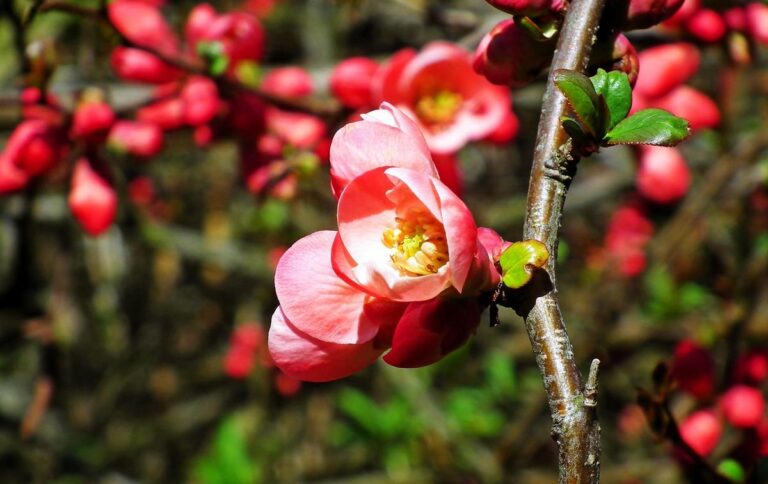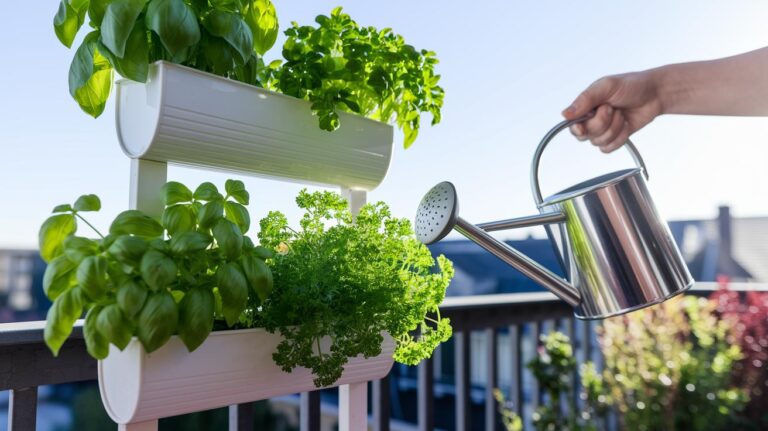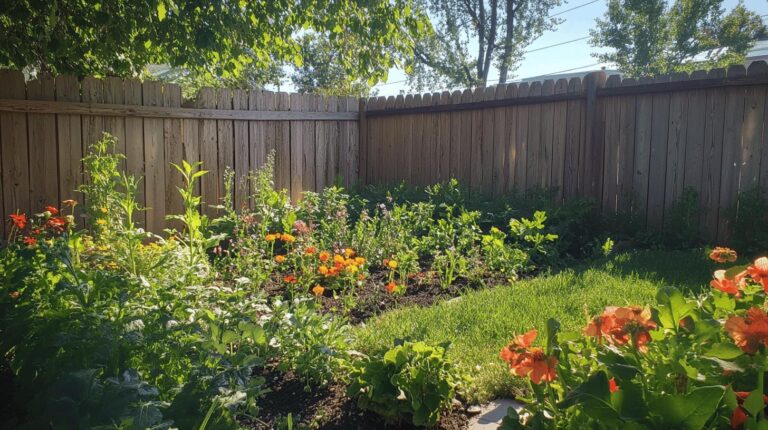Gardeners Cut Pests and Shield Pollinators with Data-Driven IPM
Integrated pest management (IPM) provides a structured method for keeping weeds, insects and diseases from overwhelming your garden. Rather than reaching immediately for a spray bottle, this approach focuses on prevention, careful observation and targeted action. Jerad Bryant, who has tended backyard beds for years, lays out each stage of IPM so gardeners can tailor a plan that matches their space and style. The outcome often delivers healthier plants and fewer chemical inputs. IPM adapts to varied climates and plant types.
Garden centers and online forums can push broad-spectrum insecticides and fungicides that promise fast results in most regions. When gardeners don’t correctly identify a problem pest or disease, they may grab a bottle labeled as an all-purpose cure. In reality, these products often kill beneficial species such as honeybees, predatory insects and native pollinators. Removing natural enemies leaves harmful populations free to explode without checks and balances. Over time, repeated sprays can intensify damage instead of resolving it.
Instead of a one-shot spray, IPM relies on data, ongoing surveillance, record temperature and timely measures. By combining records on pest sightings, weather patterns and plant health, gardeners make informed choices when treating outbreaks. Jerad Bryant cautions, “Think twice before you spray—it may have lasting effects!” Each decision aims to reduce chemical use while keeping populations below thresholds that trigger serious harm to crops and ornamentals.
Many plants struggle when non-native pests gain a foothold beyond their natural range. A caterpillar or scale insect from another region often finds warm, sheltered borders in home gardens. At the same time, domestic fungi and bacteria can flourish in moist, humid patches where air circulation is poor. A dense canopy of leaves over spaded soil creates a perfect environment for leaf spots, blight or root-rot incidents.
Some species of beetles, flies and wasps seem like intruders but actually defend plants against harmful caterpillars, aphids and whiteflies. Ladybugs, pirate bugs and mud daubers rank among the most visible helpers, while lacewings, predatory mites and certain fly larvae operate unseen in leaf litter. Birds, toads and small snakes may feed on slugs or grasshoppers. The more you learn to recognize these allies, the simpler it becomes to decide which insects should stay and which need to move on.
A pest refers to any organism―insect, plant or microbe―that injures crops, structures, livestock or natural areas. That includes weeds that choke fruit trees, fungi that rot leaves and root pathogens that wilt young seedlings. Aphids in a vegetable patch and invasive Himalayan blackberry in woodlands both qualify as pests.
Preventing pest problems begins with solid garden habits. Healthy plants tolerate stress and resist many insect invaders or disease agents. Routine maintenance cuts down on hiding spots for slugs, mites and pathogens. When an issue emerges, careful monitoring and simple records expose trends in pest activity. If intervention is needed, acting promptly stops a minor infestation from escalating into a major outbreak.
Adding aged compost to beds and borders remains a top prevention strategy. Spread a two- or three-inch layer of well-matured material over open soil around vegetables, flowers and shrubs. Compost supplies organic matter, beneficial microbes and earthworms to the root zone. Over time it sinks in, improving soil structure, water retention and aeration. Apply compost in spring before planting and add another layer in late fall to replenish nutrients and support a resilient root environment.
Other garden habits bolster plant vigor and cut pest habitat. Leave generous spacing between seedlings to improve airflow. Prune crowded or damaged limbs as needed to open the canopy. Each autumn and early spring, remove fallen leaves, spent vines and old plant debris. A tidy bed prevents fungus spores or insect larvae from overwintering in leaf litter. Rotating crop families among beds each season also breaks pest life cycles without chemical input.
Walk through the garden each week, looking under leaves and along stems for early signs of chewing, discoloration or sticky residue. Keep a simple journal or digital log to note the date, weather conditions, soil moisture and pH readings and type of insect or damage observed. Apps like Google Lens or iNaturalist can help identify unknown bugs. Spotting trends—such as aphids arriving in mid-May—lets gardeners plan protective measures before a full-scale infestation begins.
Imagine you measure soil moisture, evaluate foliage conditions and spot a sudden swarm of aphids on young shoots. These sap-sucking insects can stunt growth and spread plant viruses if left unchecked. An IPM plan advises against blanket insecticide use at this stage. Instead, pause to evaluate nearby predator numbers. A cluster of ladybeetles or hoverflies might already be moving in to feed. Observing that dynamic guides your choice of next steps.
At a small scale, removing insects by hand or with a strong water spray suffices. Jerad Bryant gently squishes clusters or blasts them off with a hose set to high pressure. Gardeners who prefer to avoid manual contact can use a fine-spray mix of water and mild soap. A quick rinse sweeps nymphs and adults away without harming most beneficial insects hiding out of sight.
Another strategy calls for boosting populations of natural predators. Grow nectar-rich blooms such as yarrow, cosmos and goldenrod to attract parasitic wasps, lacewings and syrphid flies. Leave a shallow dish of fresh water in a shaded area so birds, frogs and predatory insects can drink. Making small piles of sticks or hollow stems provides shelter for hunting insects and spiders. Over a season, these helpers often cut pest numbers before any chemical or mechanical tool is needed.
Each gardener decides how much cosmetic or fruit-damage is acceptable. Some may trim off partly eaten leaves and still harvest a full crop of beans or lettuce. Others accept a few holes, stem scars or spots as a cost of hosting wildlife. Setting a personal damage threshold helps avoid constant treatments and lets beneficial species share the space.
A key advantage of IPM comes from taking notes on seasonal cycles and pest behavior. Over several growing seasons, you will notice that squash vine borer caterpillars emerge at a predictable date or that certain fungal spots flare during damp, cool spells. Familiarity with local weather and pest trends guides planting dates. For instance, moving a lettuce crop by two weeks can precede the arrival of leaf-eating moths. That experience becomes part of a gardener’s personal reference library.
If a new problem appears, your county or state extension office offers research-based advice. Many maintain fact sheets on common insects, weeds and diseases. Master gardener programs and garden clubs welcome questions at meetings or online. You can also browse agricultural university sites or horticulture guides in print and newsletters. Building a network of trusted sources cuts down on guesswork when unfamiliar symptoms begin to show.
In IPM, “biological controls” describe living organisms that curb pests. The bacterium Bacillus thuringiensis, known as Bt, attacks caterpillars in the soil or on foliage without harming most pollinators. Beneficial nematodes target grubs and root-feeding insects underground. Other products rely on fungal pathogens that invade insect hosts or parasitic wasps that lay eggs inside aphids. These controls often arrive in small packets of live cultures, ready for release when a specific pest reaches a critical level.
Before releasing any biocontrol, confirm the exact pest species. Some agents act as generalists, reaching into multiple insect orders, while others focus on one target pest. Read product labels for host range and safety data. Monitoring counts of both pests and predatory populations guides timing. When specialists like tachinid flies or predatory mites match a specific outbreak, introduce only the packet size recommended for the scale of infestation in your beds.
Many predators already exist in surrounding habitats. Instead of buying live insects, you can invite them into earned space. Plant pollen-producing groundcovers such as alyssum or buckwheat under fruit trees and alongside beds. A clean birdbath set on level ground gives small birds and toads a watering hole. Retained driftwood or stone piles offer dark retreats for spiders, ground beetles and centipedes that patrol for caterpillars and earwigs after dusk.
Traps help track pest activity and, in some cases, reduce numbers. Pheromone traps with sticky liners draw in adult moths, revealing the time window when egg-laying begins. Trap placement near the canopy lets you check weekly counts, deciding when a more severe response is required. Yellow sticky cards in greenhouse corners or indoor plant areas catch fungus gnats and whiteflies. Blue-toned traps lure thrips. Crawling insect traps, placed at the soil line around tomatoes, detect flea beetles early. Using a mix of tools refines timing of any further action.
Slug traps offer a targeted way to cut nocturnal leaf-munchers. Take a shallow container, fill it an inch or so with light beer or a mixture of warm water, a pinch of yeast and a spoon of flour. Bury the edge of the container flush with the ground. As slugs crawl toward the bait, they fall in and cannot climb back out. Check traps every morning, remove captured slugs and offer them to chickens or compost them.
Mechanical techniques remove or deter active pests. Handpicking caterpillars, beetles and egg clusters cuts numbers immediately. A firm shake of leafy stems sends many insects to the ground where birds and ground-dwellers can consume them. Using a hose set on pulse pressure washes off aphids or mites hiding on undersides of leaves. For soil pests, hoeing around stems disrupts larval stages in the top inch or two. Mixing methods often produces the fastest drop in pest counts.
Exclusion provides a longer-term barrier without chemicals. Floating row covers drape over vulnerable crops, keeping adult moths, beetles and aphids from laying eggs. Secure fabric edges with soil or pins to eliminate crawl-under gaps. Wire cages or netted hoops protect young fruit trees from birds and rodents. Sticky barriers wrapped around trunks halt ants and scale. Mesh bags over ripening fruit block wasps and caterpillars. Each structure shields plants until pests assume their seasonal flight or crawling patterns have passed.
If you choose chemical products, apply them with precision at times when pollinators are least active. Morning or late afternoon sprays target pests on leaves without exposing foraging bees. Direct sprays at the specific area of damage instead of fogging the entire garden. Calibrate sprayers to deliver the correct volume of active ingredient. Wear protective gear and observe the interval between applications listed on the label. Limiting coverage to infested spots cuts down collateral harm.
While dedicated bactericides are rare, several fungicides offer bacterial suppression. Copper-based sprays and specific biochemical agents disrupt bacterial cell walls when infections break out. After treatment, adjust plant spacing and improve air flow to reduce moisture on leaves. Increasing daily sun exposure and avoiding overhead irrigation further limits bacterial growth. Rotating treated beds with non-host crops gives soil microbes time to outcompete any surviving pathogens.
By integrating prevention, regular checks and targeted actions, gardeners maintain healthy, resilient plants while preserving beneficial insects and wildlife. Learning local pest patterns and refining each step makes it possible to minimize chemical use without sacrificing yield or beauty. Gardens managed with this holistic view often require fewer emergency interventions and deliver more consistent results over time.







